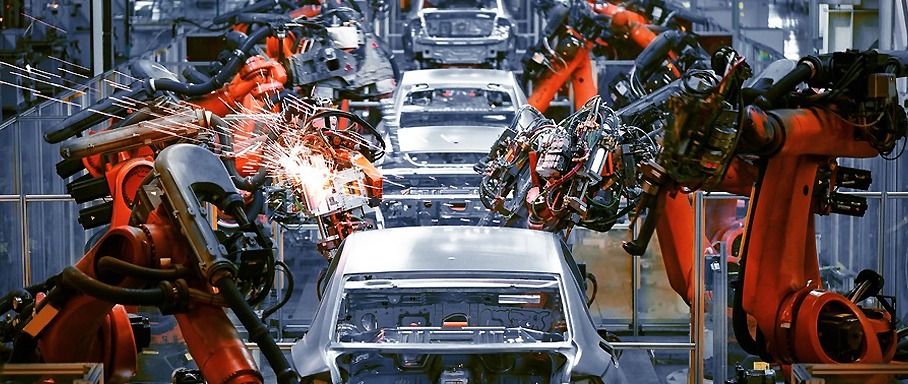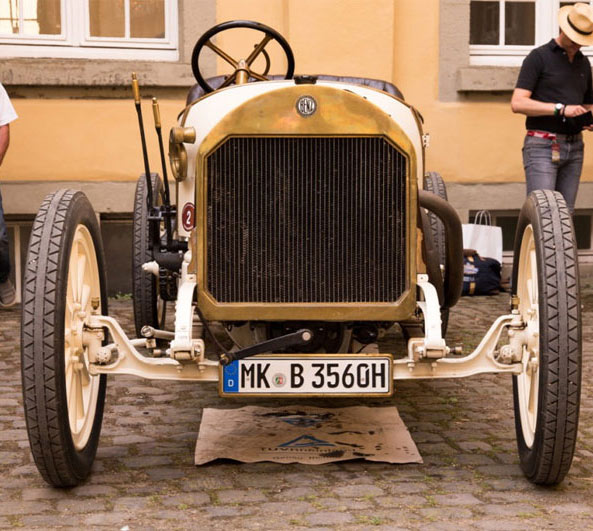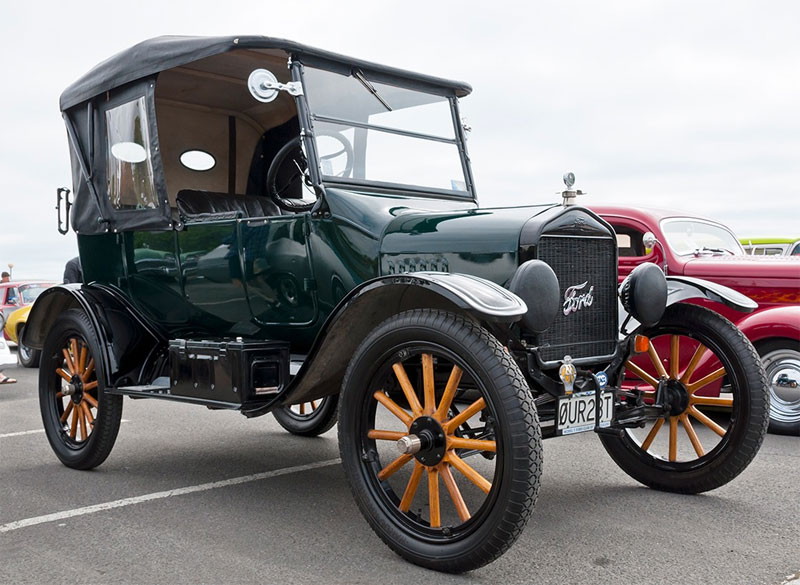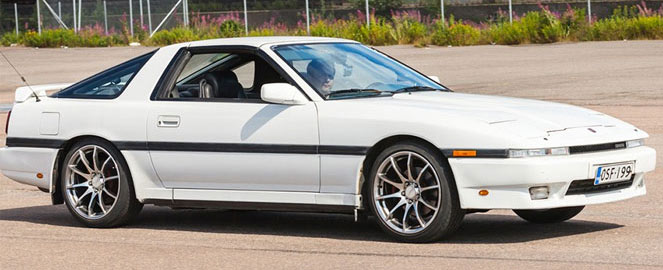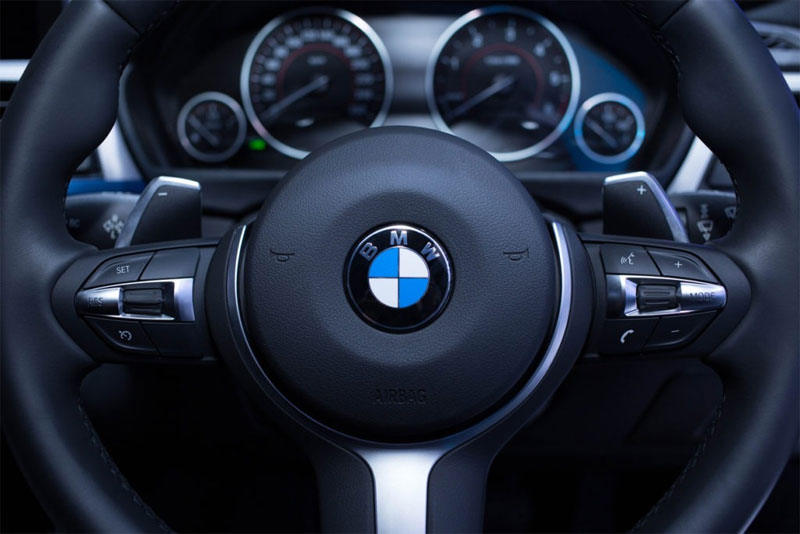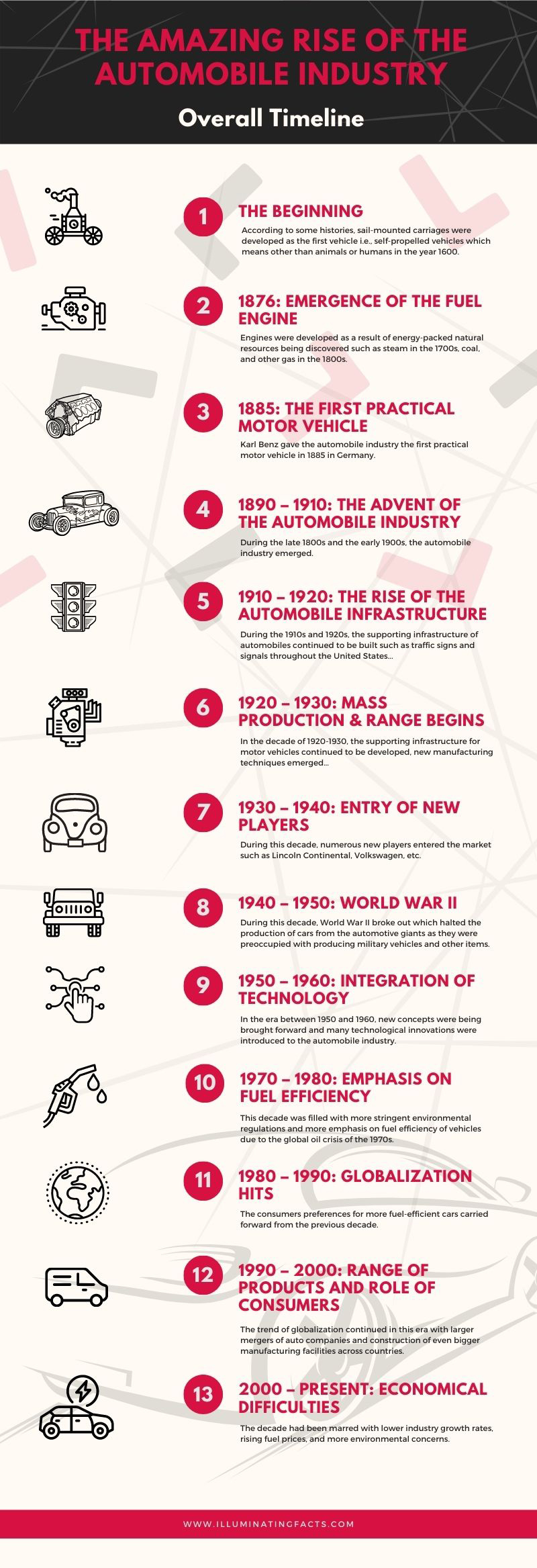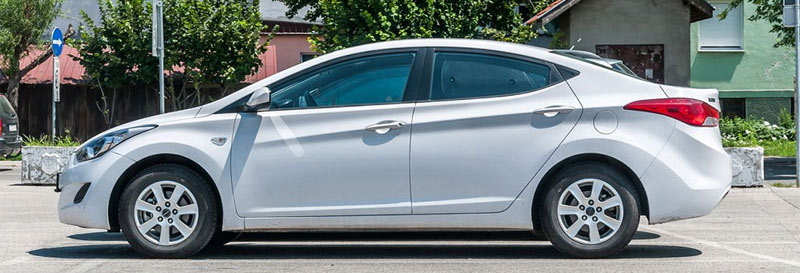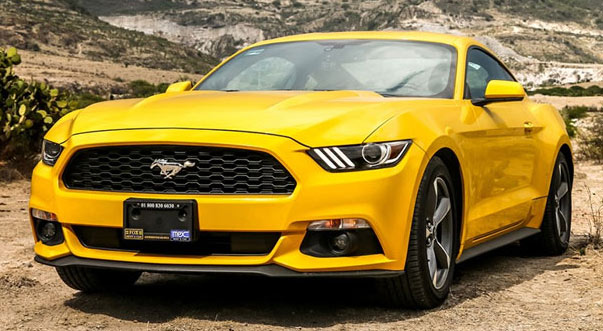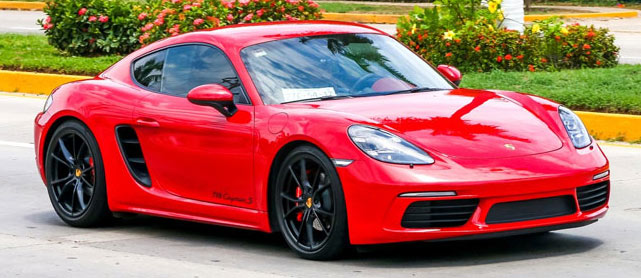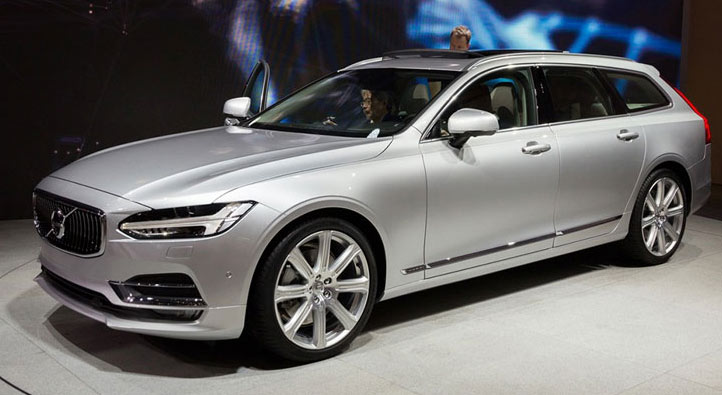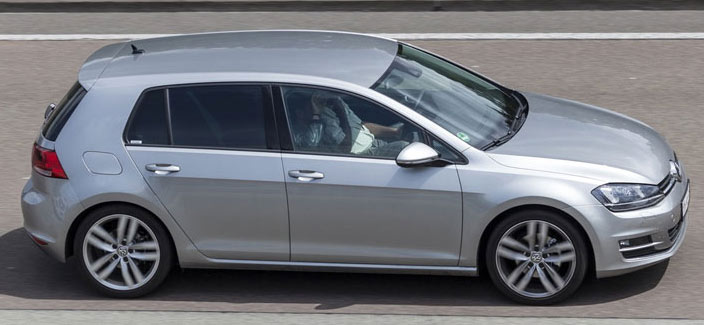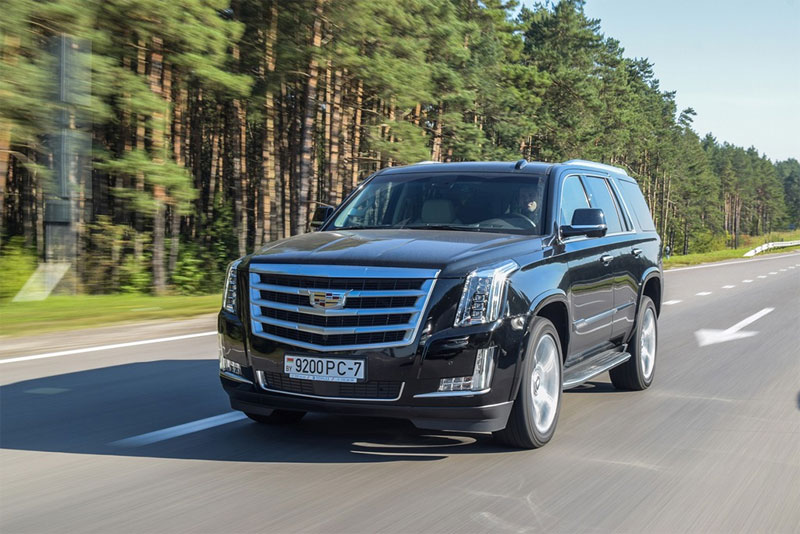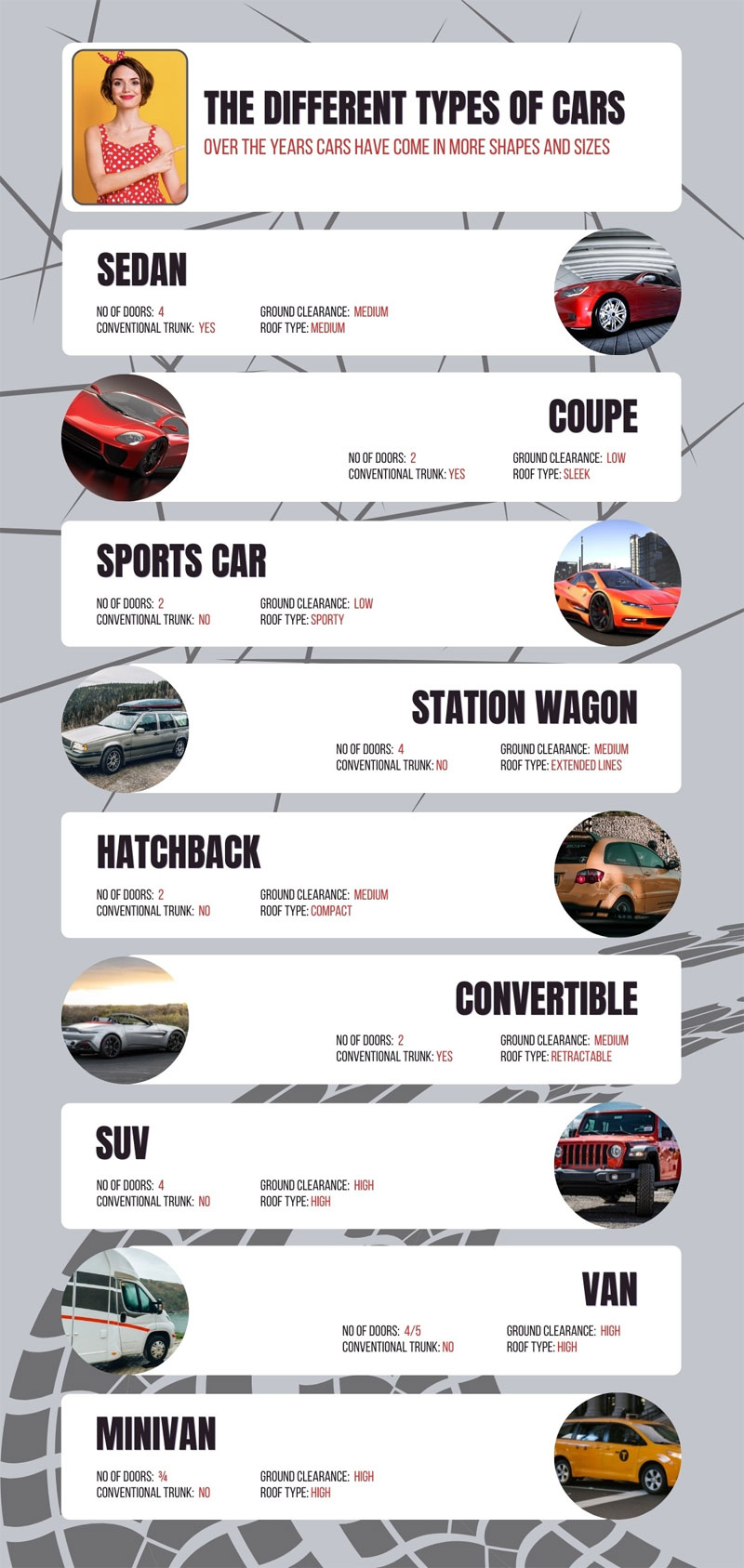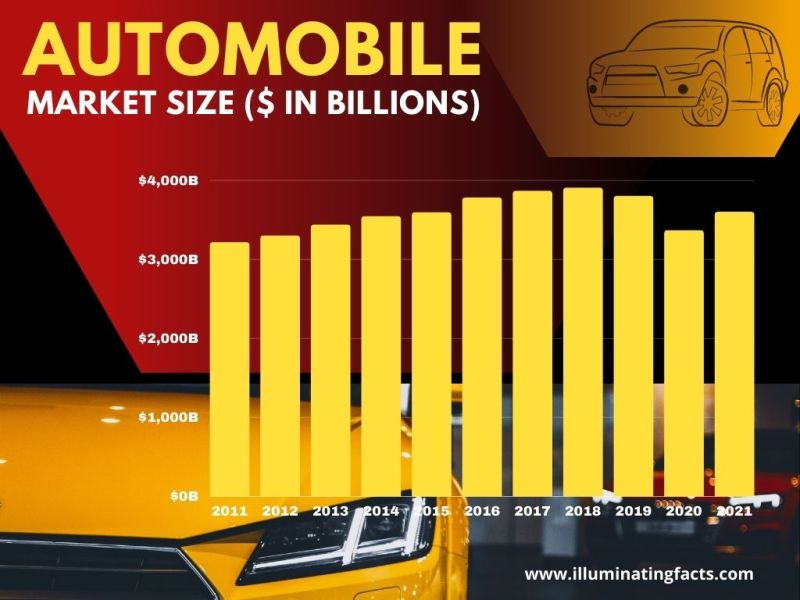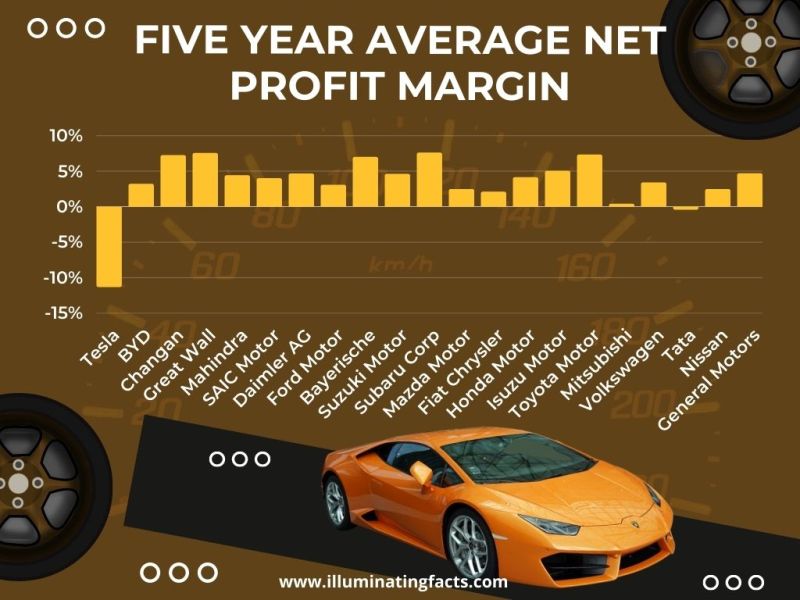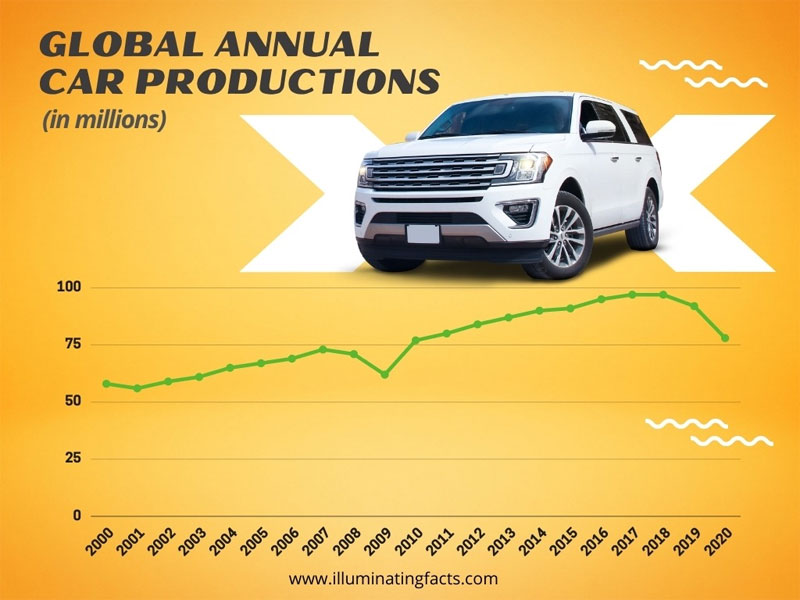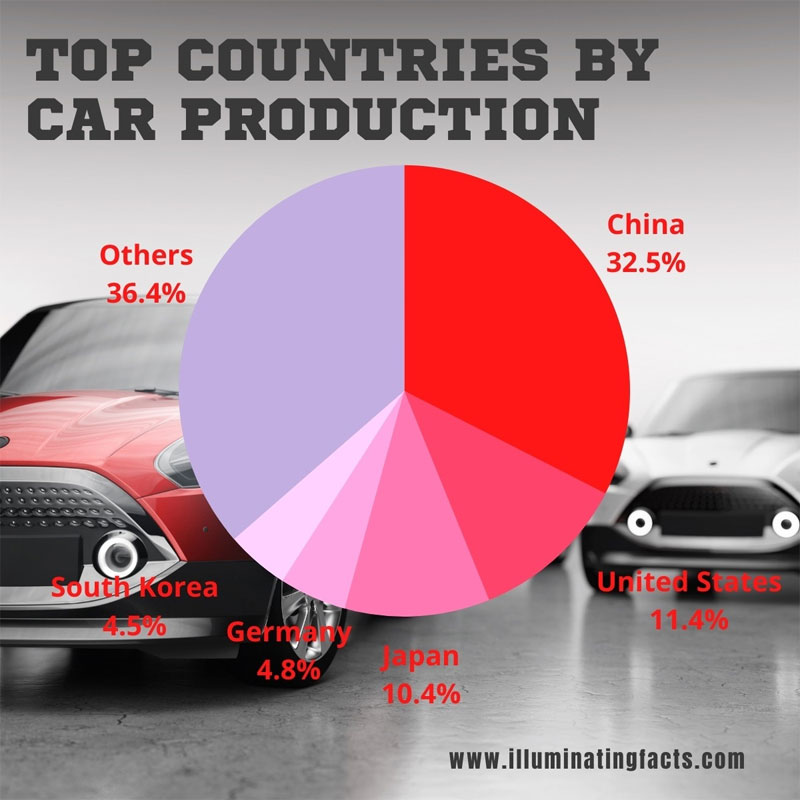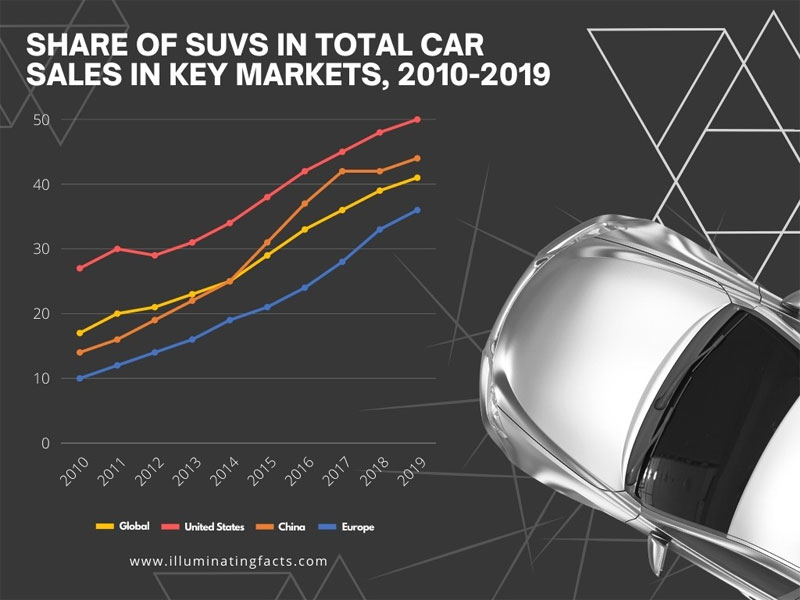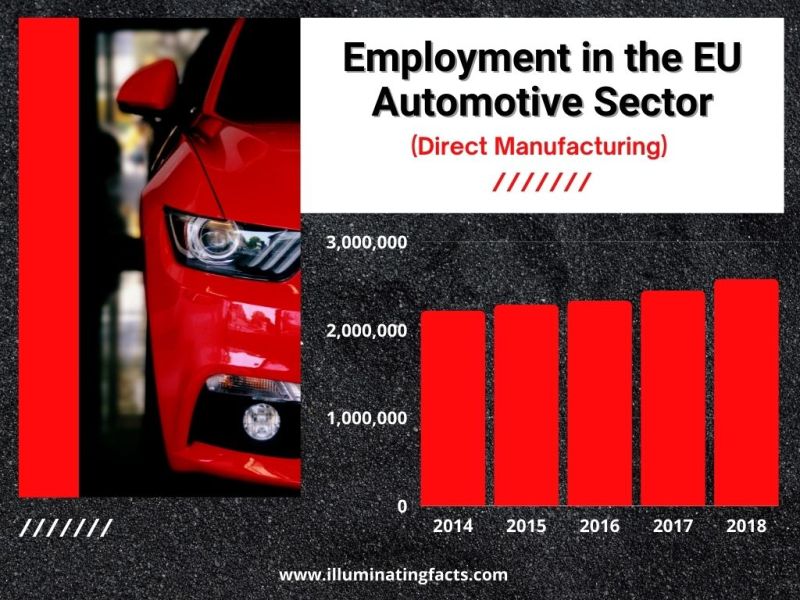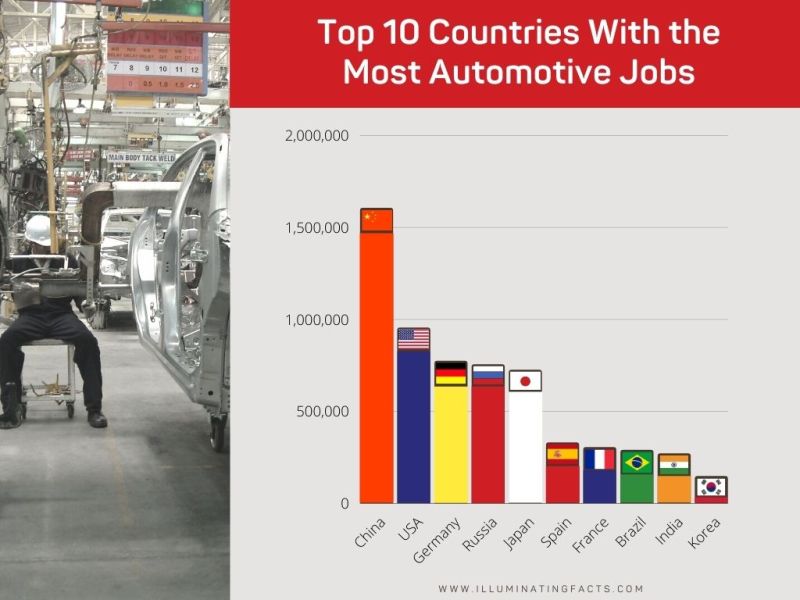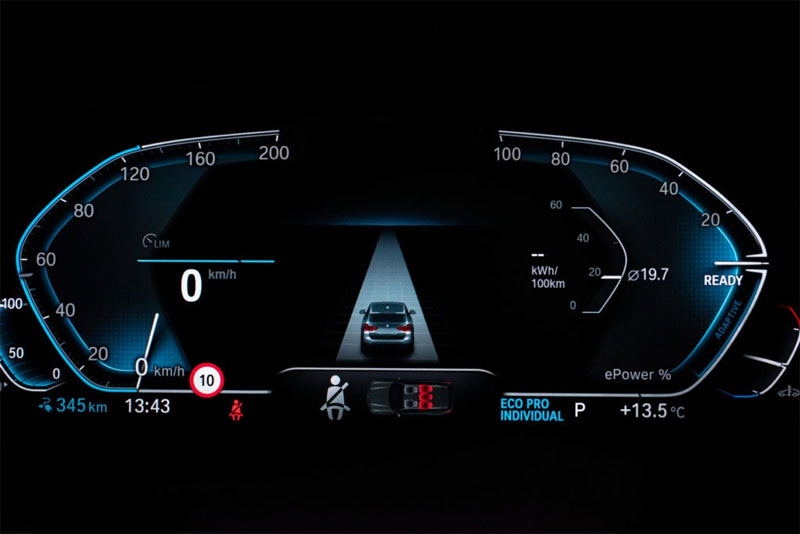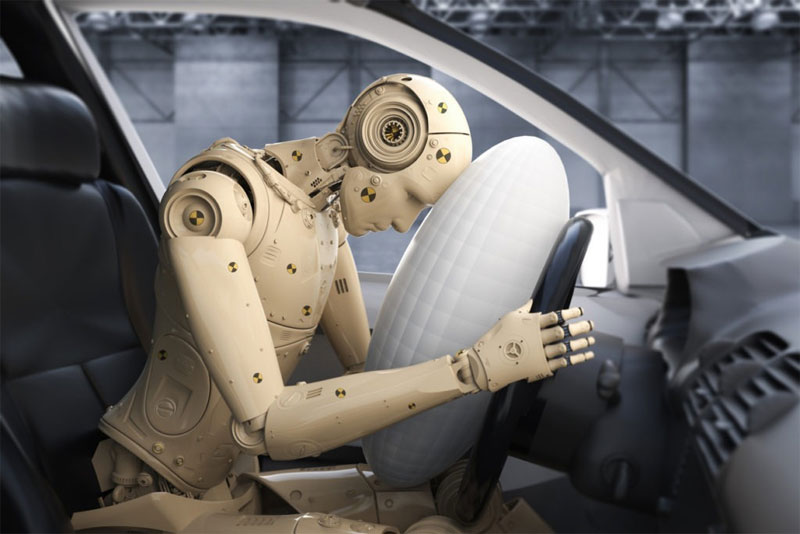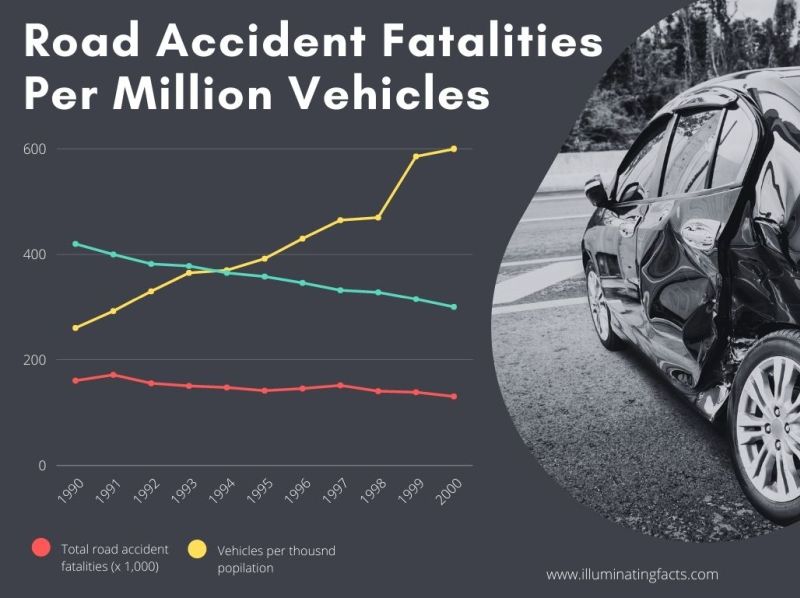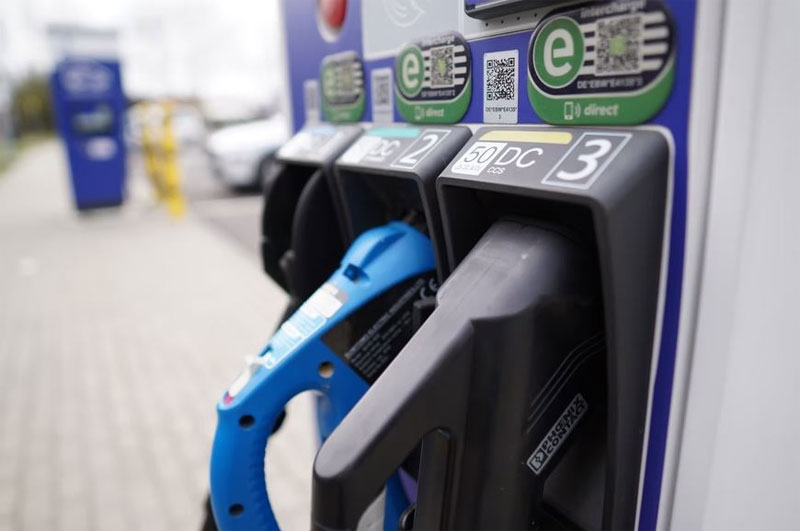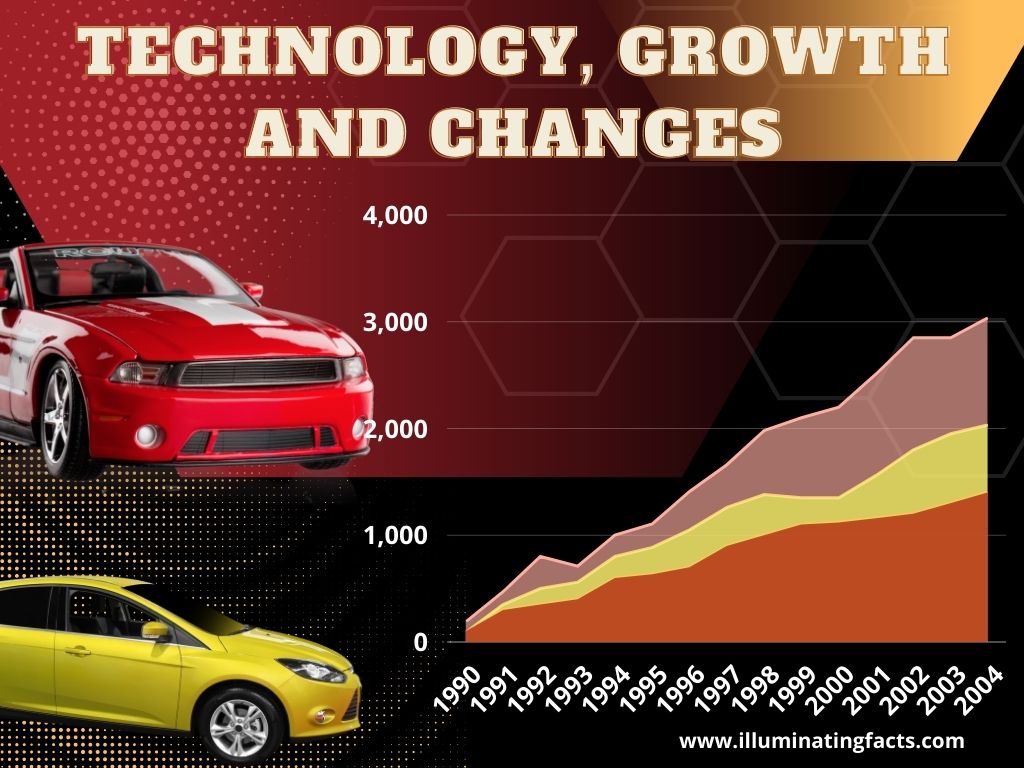Background
The automobile industry encompasses design, research and development, production, and sales and marketing.
History
Although Americans swiftly dominated the automobile industry during the first half of the twentieth century, the automobile was actually crafted and perfected in Germany and France by the end of the 1800s.
Gottlieb Daimler, Nicolaus Otto, Karl Benz, and Emile Levassor played a significant role in the development and perfection of the automobile. However, it was American industrialist, Henry Ford, who took the automobile industry to the next level with mass production and assembly lines. By the 1920s, the three automobile manufacturing companies that garnered the greatest market share were: Ford, General Motors, and Chrysler.
The following timeline highlights the evolution of the automobile and the influence it has had upon modern society.
First Modern Motor Vehicle
Credit for the first modern motor vehicle goes to Wilheim Maybach for the 1901 Mercedes for the Daimler Motoren Gesellschaft. It sported a thirty-five-horsepower engine and had a top speed of 85 km/hour. By the end of 1909, the Daimler factory was producing thousands of Mercedes 35 HP per year.
Model T and Henry Ford
The Ford Model T is considered to be the first-ever affordable motor vehicle [1]. Its affordability was made possible by mass production and assembly line techniques pioneered by Henry Ford. In addition to efficient production techniques, the lack of trade barriers between US states meant that sales were achieved over wide geographic areas at lower production costs. Moreover, the availability of raw materials at economical prices and high wage rates for skilled labor led to the adoption of mechanical industrial processes in the United States.
The Model T was released in 1908 and had four cylinders with the transmission and engine covered. The suspension of the Model T used two semi-elliptic springs. Because the Model T was cheap—priced at $825 in 1908— most American drivers learned to drive despite its complex foot-operated transmission and steering wheel.
As sales of the Model T rose, prices fell. By 1916, the price dropped to $360 for the basic model. By 1918, Ford sold approximately 472,000 vehicles, with fifty percent of all cars in America being the Ford Model T.
Ford eventually phased this car out of the market in 1927, but before it did, the Model T achieved sales of over 15 million. Owning a personal automobile was no longer a hoped-for dream, but a very achievable reality.
The Ford Model T | |||
Engine Type | 4 (# of cylinders) – inline | Max. Torque | 83 pounds-feet |
Fuel Type | Petrol, Kerosene, & Ethanol | Drivetrain | RWD |
Coolant | Water | Transmission | 2 speed manual |
Fuel System | 1 Holley Carb | Fuel Economy | 13-21 mpg |
Top Speed | 42 mph | Suspension | Semi-elliptical springs |
Engine Alignment | Longitudinal | Tires Type | Pneumatic Clincher |
Number of valves | 8 valves | Basic wheelbase | 254 cm / 100 in |
Output | 20bhp at 1800 rpm horsepower | Body Type | Sedan |
No of Doors | 4 | Length | 340 cm / 134 in |
Curb Weight | 1500 lbs | Weight-Power Ratio | 77 lbs / hp |
Front Suspension | Transverse leaf-spring (De Dion Axle) | Rear Suspension | Transverse leaf-spring (De Dion Axle) |
World War II and the Automobile Industry
During World War I and World War II, the automobile industry played a significant role by producing military vehicles and other war logistics. In fact, twenty percent of the United States’ total war production during World War II came from automobile manufacturers and their production of both military and nonmilitary vehicles and equipment.
Because tires and fuel were rationed during the war, the manufacturing of personal automobiles ceased. As the war neared its end, the demand for newer motor vehicles soared. As a result, the automobile industry rapidly expanded its production with better versions of vehicles that had stronger engines and longer bodies.
Japanese Automakers Entry and the American Recoup
Postwar American automakers prioritized aesthetics and styling over the safety and economy of vehicles. The quality of American cars became so poor that each vehicle had an average of twenty defects per unit and was known to be gas guzzlers.
Due to tighter environmental and carbon emissions regulations as well as rising oil prices, the era of road cruisers ended. The United States no longer dominated the auto industry and was quickly replaced by well-designed and fuel-efficient Japanese and German cars. America saw dwindling sales of domestic cars and rising demand for Japanese and German imports. In 1980, Japan became the world’s leading automobile manufacturer; in fact, Japan, to this day, holds this dominant position in the automobile industry.
Because of the rising Japanese competition, American automobile manufacturers had to rethink and reinvent their brands. More emphasis was given to fuel efficiency, employee motivation, and functional styling. As a result, American cars became smaller, fuel-efficient, safer, and more environmentally friendly. Automakers also streamlined the industry with more technology and computer-aided manufacturing.
The Automobile Industry Now
The automobile industry has grown dramatically with changes so significant that today’s cars are completely different from the vehicles manufactured even twenty years ago. This is mostly due to the rising integration of technology in motor vehicles as well as improved fuel economy and safety features.
Presently, China stands as the largest automobile manufacturer in the world with up to 20 million units produced in 2020. However, Germany retains its dominant position as the top global exporter of automobiles followed by Japan and the United States. These three countries have consolidated their dominant positions as the biggest exporters of automobiles since the early days of the industry.
Overall Timeline
1600: The Beginning
According to some historical accounts, sail-mounted carriages were developed as the first self-propelled vehicle. However, most automobile industry historians believe that the development of the engine marked the true beginning of vehicles.
1876: Emergence of the Fuel Engine
Engines were developed as a result of energy-packed natural resources being discovered such as steam in the 1700s, coal, and other gas in the 1800s. After the development of the first internal combustion engine (ICE) with 4 strokes in 1876, the establishment and production of motor vehicles soon began in Germany and France followed by the United States which truly kicked off the automobile industry.
1885: The First Practical Motor Vehicle
Karl Benz gave the automobile industry the first practical motor vehicle in 1885 in Germany. This motor vehicle was equipped with a petrol engine and the patent for this automobile was granted to Benz on 29 January 1886 and the production began in 1888.
1890 – 1910: The Advent of the Automobile Industry
During the late 1800s and the early 1900s, the automobile industry emerged. The development of further technologies such as the steering wheel and the floor accelerated—as we know it—were coined and laid the path for future automobiles. These developments improved the accessibility and ease of use of these automobiles which led to rising demand for the automobiles.
At the same time, an overall infrastructure was being built up to prepare the society for a new common: motor vehicles. Driver’s licenses were being given out to citizens, repair and service businesses were opening, and car sales were soaring with loans & bank financing. During the same time, revolutionary motor vehicles such as the Ford Model T were also developed.
1910 – 1920: The Rise of the Automobile Infrastructure
During the 1910s and 1920s, the supporting infrastructure of automobiles continued to be built such as traffic signs and signals throughout the United States and around the world in countries such as Germany and France where cars were becoming prevalent.
During the same time, mass production techniques such as the assembly line by Henry Ford were launched which made the cars even more affordable for the common man. Moreover, automotive companies began acquiring and merging with each other and expanded to other geographical regions of the world such as Canada, etc.
1920 – 1930: Mass Production & Range Begins
In the decade 1920-1930, the supporting infrastructure for motor vehicles continued to be developed, new manufacturing techniques emerged, and the mergers of automobile companies continued. In the United States, the Bureau of Public Roads and the implementation of the Kahn-Wadsworth Bill aided in the development of national road networks.
Apart from this, because of improved mass-production techniques, the range of cars improved for the final consumers. GM adopted the strategy of increasing product variety for its consumers; however, Ford did not and thus allowed GM to gain a higher market share than Ford at the time.
1930 – 1940: Entry of New Players
During this decade, numerous new players entered the market such as Lincoln Continental, Volkswagen, etc. The differences in consumer preferences for motor vehicles in the United States and Europe differentiated the two markets; in the US, consumers preferred larger and more powerful cars whereas consumers in Europe preferred compact and low-priced cars. These consumer preferences can still be seen when observing American vis-à-vis European cars. During this time, GM continued to gain more market shares than Ford due to its product range strategy.
1940 – 1950: World War II
During this decade, World War II broke out which halted the production of cars from the automotive giants as they were preoccupied with producing military vehicles and other items. Following the end of the war, the economies of Europe and Asia-Pacific countries were obliterated which required more innovative business strategies and products. An example of this is Toyota’s use of the Just In Time (JIT) inventory system which reduced inventory costs significantly. Using different strategies, financial returns to investors were increased such as lower inventory costs and production costs due to efficient mass production.
1950 – 1960: Integration of Technology
In the era between 1950 and 1960, new concepts were being brought forward and many technological innovations were introduced to the automobile industry. Many changes were made such as new designs, ride comfort, safety & environmental concerns were addressed, seatbelts, and air conditioning. The motor vehicles slowly started taking the shape of more modern cars as we know them today.
1970 – 1980: Emphasis on Fuel Efficiency
This decade was filled with more stringent environmental regulations and more emphasis on the fuel efficiency of vehicles due to the global oil crisis of the 1970s. These regulations and crises led to the development of catalytic converters which led to low emissions. Moreover, a higher number of foreign cars were emerging in the US market as consumers demanded more fuel-efficient motor vehicles. Since motor vehicles in Asia were relatively more fuel-efficient than their American counterparts, they started gaining market share in more developed markets such as the US and Europe. In the same decade, Japanese automakers went one step ahead with the introduction of their ‘lean production’ methods.
1980 – 1990: Globalization Hits
The consumer’s preferences for more fuel-efficient cars carried forward from the previous decade. As a result of this, American carmakers continued to lose market shares to other companies in the US with better fuel economies than the local-made cars. Consequently, car manufacturing became more globalized as the assembly of vehicles was happening all over the world.
This trend of globalization was furthered in the 1990s when mergers between automakers occurred and overseas facilities were built. This globalization allowed new players to enter and exit markets at lower costs i.e., lower barriers to entry and exit in global markets.
1990 – 2000: Range of Products and Role of Consumers
The trend of globalization continued in this era with larger mergers of auto companies and the construction of even bigger manufacturing facilities across countries. This allowed more variety in cars for consumers all around the world but also increased competition among manufacturers which ultimately resulted in better cars for the consumers at lower prices.
In addition, the sophistication and empowerment of consumers led to specialized markets being formed in diverse countries such as Southeast Asia and Latin America, and as such, lead to further strategic partnerships and alliances among multinational carmakers.
2000 – Present: Economical Difficulties
The decade had been marred with lower industry growth rates, rising fuel prices, and more environmental concerns[2]. All of these led to consumers’ preferences shifting from inefficient cars to smaller, more efficient cars, to electric vehicles. The 2007 financial crisis hit many automakers hard, particularly General Motors as they had filed for bankruptcy in 2009.
However, this era has also been marked by an astonishing rate of technological innovations such as self-driving cars, lane assists, air suspensions, and many other mind-blowing technological innovations. In addition to this, this era has also seen wider acceptance of electric cars[3] due to improving supporting infrastructure around the world.
A Summary
The overall timeline of the Automobile Industry is illustrated in the image below.
Types of and Variations of Automobiles
The automobile market has hundreds of different choices for different types of cars. This makes it hard for a consumer to choose amongst these wide-ranging vehicles and making sense of it all can be a difficult task. These types of automobiles were developed because of diverse consumer preferences. Some types and variations of automobiles are popular in certain countries whereas some are not. For the purposes of this guide, we define a car as a passenger vehicle of all types.
This section breaks down the types and variations of automobiles into nine different categories from Sedans to Semi-Trucks[4]. It is inclusive of all the different types and variations of automobiles.
Sedan
A sedan is a passenger car with four doors and a separate trunk. It is in a three-box configuration with engine, passenger, and cargo. This type of vehicle is among the most popular around the world and many flagship cars by renowned multinational automakers are sedans. Sedans are available in small, compact, and full-size. Examples of small sedans include Kia Rio and Toyota Yaris. Examples of compact sedans include Toyota Corolla and Honda Civic. Examples of full-sized sedans include Toyota Avalon, Dodge Charger, and Hyundai Sonata.
Coupe
Coupes are passenger vehicles with typically two doors and a sloping trunk with a solid roof. Examples of such a body type include Ford Mustang, Audi A5, Mercedes C-Class Coupe, and BMW 4 Series. However, manufacturers have also started labeling passenger cars with four doors as Coupe with sloping or sleek rooflines that resemble a coupe.
Sports Car
Sports cars are passenger cars designed to perform and provide high-speed output. They are the sportiest and most aggressive-looking car body type. They usually have two doors; however, some do have two small rear seats. They usually have low ground clearance, are lustrous, and are expensive. Examples include BMW M2, Chevy Camaro, Porsche 718 Cayman, and Mazda MX-5 Miata.
Station Wagon
Station Wagons are passenger cars with four doors and extended back. This type of car body has an extended roofline to support the hatch door instead of a trunk at the back. They usually have good clearance and are quite similar to Sedans. Examples include the Subaru Outback and Volvo V60. However, this body type is no longer famous and very few models are available in the market.
Hatchback
Hatchbacks are passenger cars that have four doors but limited cargo space instead of a conventional trunk as in a sedan. They are compact vehicles and have a more ‘square-shaped’ roof. Examples of hatchbacks include Volkswagen Golf, Hyundai Veloster, and Kia Rio. Hatchbacks, nowadays, are being equipped with more sporty looks to make them look more aggressive.
Convertible
Convertibles are passenger cars with a retractable roof that leaves the passenger’s cabin exposed to the open environment around the car. Most modern convertibles have automatically retracting fabric-made roofs, however, some convertibles may require this operation to be done by hand. Examples of convertibles include Audi A5, Mercedes-AMG C63, and Chevy Camaro ZL1.
Sports Utility Vehicles (SUV)
SUVs are also referred to as crossovers and are passenger vehicles that are higher in height than sedans which means that they have higher ground clearance, and usually offer more space than most of the sedans out there. The cargo area is similar to a station wagon’s extended back and some SUVS also offer three rows of seats, making them 7 seaters. These SUVs are also broken down into small, compact, and full-size. Examples include Nissan Kicks and MG ZS for small, Hyundai Tucson and Kia Sportage for compact, and Ford Expedition and Toyota Fortuner for full-size. High-value and luxury brands such as Mercedes and Range Rover also offer SUVs.
Van
A van is a road vehicle that is used for the purposes of transporting merchandise or a group of people. It is usually bigger than an SUV but smaller than a truck. Vans for transporting a group of people usually have no cargo or trunk in the back and have only two front seats for the driver and the front passenger. Some vans may be used for specialized purposes such as transporting valuable goods e.g., cash, gold, etc., and these are called armored vans. Examples include Mercedes-Benz Sprinter, Toyota Hiace, Ford Transit Connect Van, and Nissan NV Cargo.
Minivans
Minivans are passenger vehicles that primarily serve the purpose of transporting people in the rear seating rows with either two or three rows. Minivans are also known as MPV or people carriers in the European regions and other parts of the world. These are smaller than vans but usually are either equal to or bigger than SUVs and regular sedans. They have a good amount of cargo space behind the last row of seats in the back. They are a suitable vehicle type for large families. Examples include Kia Sedano, Dodge Grand Caravan, and Honda Odyssey.
Semi-Truck
A semi-truck is a vehicle that is made for the purpose of hauling heavy loads[5]. The semi-truck itself is called a tractor to which a semi-trailer is attached whose weight is mostly born by the tractor. The semi-trailer is attached through a fifth-wheel coupling (also known as a hitch). There are further sub-types of semi-trucks such as flat-roof, mid-roof, raised-roof, and day cab.
Car Type | No of doors | Conventional trunk | Ground clearance | Roof Type |
Sedan | 4 | Yes | Medium | Medium |
Coupe | 2 (at times, 4) | Yes | Low | Sleek |
Sports Car | 2 | No | Low | Sporty |
Station Wagon | 4 | No (extended cargo) | Medium | Extended lines |
Hatchback | 2 | No | Medium | Compact |
Convertible | 2 | Yes | Medium | Retractable |
SUV | 4 | No (additional cargo) | High | High |
Van | 4/5 | No | High | High |
Minivan | ¾ | No (additional cargo) | High | High |
In Numbers
This section will look in-depth at all the numbers associated with the automobile industry which includes the financials, number of cars made, manufacturers, different countries involved in the manufacturing of automobiles, and the number of jobs tied to the automobile industry with good visualization of data to make it easier for the reader to digest the numbers.
Money
The global automobile industry is colossal and is one of the largest manufacturing industries in the world. As per IBISWorld, a top market intelligence report, the global automobile industry was worth approximately 3.6 trillion US dollars in 2021[6].
The graph above depicts the market size of the global automobile industry in dollars with billions from the period 2011 to 2021. The market size has remained quite significant and above 3 trillion US dollars throughout. However, it can be observed that the growth rate has not been very significant at all as the growth rate in 2021 was 7%.
In fact, the market size of the global automobile industry fell between 2019 and 2021. This meant that the annualized growth rate between 2016 and 2021 is -1%. The struggling automobile industry is primarily due to a fall in demand from consumers, particularly the largest consumer base i.e., China. In addition to this, emission woes and electric cars have challenged the industry’s sales. These are among many reasons why the automobile industry’s growth has slowed down.
The graph above depicts the five-year average net profit margin for the automobile industry on June 30, 2020. The data is obtained from Statista, a market intelligence company.
Cars Made
Almost 165,000 cars were made every single day after 2012 as the world hit the record of producing over 60 million cars in the year 2012. Global automobile production has generally seen an uprise with a fall during 2009 financial crisis and the COVID-19 global pandemic.
The graph above depicts the global annual car production in millions from 2000 to 2020. The data is sourced from the Statista Research Department. In 2020, almost 78 million motor vehicles were manufactured all around the world. This, however, may seem a significant number absolutely but when compared relatively and visualized in a graph, it is a significant drop from the last one or two years. This figure of 78 million is a decline of 15 percent in comparison with the previous year.
China, the United States, Japan, Germany, and South Korea remained at the top of the automobile industry and produced the most globally while China leads the group with over 21 million cars produced in 2020.
The pie chart above shows that China leads the global car production with one-third of the entire car production of the world. United States, Japan, Germany, and South Korea are the other countries in the top 5 group but far behind China.
SUVs / Crossovers
SUVs and Crossovers have taken over sedans to become the most popular car type in the world. This is illustrated by the fact that many automobile companies have halted production of sedans and solely focus on SUVs and crossovers such as Ford.
In the graph above, it can be observed that the share of SUVs in total car sales in key markets between 2010 and 2019 has consistently increased and has reached up to 50%. There are several reasons why SUVs have become popular among consumers. One is that consumers feel SUVs are safer than sedans because of their height and weight which gives the user a feel of safety. Two, SUVs usually have more cargo room, and three, SUVs are performance-wise more capable. And, ultimately, SUVs offer a better value for money for consumers. All these reasons have combined to make SUVs and the crossover body type to become the most popular among consumers all around the world.
Jobs Tied to The Automobile Industry
The automobile industry is one of the largest ones in the world and employs a significant number of people. In addition, the automobile industry contributes significantly to the gross domestic product or economy of a country[7].
Source: ACEA
The graph above depicts the number of employees in the EU automobile industry who are directly related to manufacturing. It can be observed that the number of employees in the EU Automobile Industry have increased steadily. This data has been obtained from EuroStat. In addition to this, 11.6% of all EU manufacturing jobs are in the auto industry.
Country | No of Employees | Country | No of Employees |
Argentina | 12,116 | Korea | 246,900 |
Australia | 43,000 | Malaysia | 47,000 |
Austria | 32,000 | Mexico | 137,000 |
Belgium | 45,600 | Netherlands | 24,500 |
Brazil | 289,082 | Poland | 94,000 |
Canada | 159,000 | Portugal | 22,800 |
China | 1,605,000 | Romania | 59,000 |
Croatia | 4,861 | Russia | 755,000 |
Czech Republic | 101,500 | Serbia | 14,454 |
Denmark | 6,300 | Slovakia | 57,376 |
Egypt | 73,200 | Slovenia | 7,900 |
Finland | 6,530 | South Africa | 112,300 |
France | 304,000 | Spain | 330,000 |
Germany | 773,217 | Sweden | 140,000 |
Greece | 2,219 | Switzerland | 15,500 |
Hungary | 40,800 | Thailand | 182,300 |
India | 270,000 | Turkey | 230,726 |
Indonesia | 64,000 | UK | 213,000 |
Italy | 196,000 | USA | 954,210 |
Japan | 725,000 |
Source: International Organisation of Motor Vehicles Manufacturers (OICA).
The total of all these directly related employment in auto and parts production is 8,397,451. However, each direct job produces five indirect further jobs, as such, this means more than 50 million people owe their employment to the automotive industry globally or at least in the countries in this report by International Organisation of Motor Vehicles Manufacturers (OICA).
Technology, Growth, and Changes
The automobile industry has seen significant changes in terms of technology. It would be difficult to compare a modern car with a car from the 1940s. A stark difference between the two would be seen. Most of the changes have taken place to improve user convenience, safety, quality, power, and value addition. All in all, motor vehicles are much more safer, economical, better quality, and inclining towards electric power.
Safety
Car safety has improved significantly over the history of the automobile history, partly because of stringent regulations and consumer empowerment. This improvement in car safety is not going to halt anytime soon because of the ongoing research to improve safety and the integration of technology has made cars even safer.
In the early days of motor vehicles, little attention was given to car safety because the main purpose was to get users from point A to point B. Windscreen wipers, in order to clear off water from the windscreens, were introduced in 1903, and indicators were introduced in 1914.
General Motors undertook the first crash test in 1934 and a crash dummy named Sierra Sam was first used in the 1950s. Moreover, research on airbags started back in the 1920s, however, it took decades before airbags could be installed in motor vehicles and be used.
By the 1950s, seat belts were introduced after World War II. General Motors was at the forefront of leading this change in the United States, and Mercedes-Benz in Europe. In 1959, Volvo developed and released the three-point seatbelt which furthered car safety. And, then finally, in 1963, inertia reels were inserted and following that change, seatbelts were practically unchanged.
Countries started regulating the fitting and usage of seat belt around the world. For example, in 1963, car manufacturers were required to fit seatbelts on the front, and in 1983, back seats were also required to be fitted with seatbelts. And ultimately, in 1991, they were made mandatory to be worn. Similar timelines were followed by other countries, some slower and some faster.
In the late seventies and early eighties, anti-lock brakes (ABS) systems were introduced to the world in the Mercedes Benz S-Class in 1978. Airbags started appearing in the automobile industry around 1970s after being in development for years.
In the nineties, many technological innovations were introduced to improve car safety such as electronic stability. And in 1997, Euro NCAP was established to conduct crash tests and assign ratings to cars independently on the basis of their performance in the crash tests.
The present era has seen safety innovations like no other. Emergency braking, radar monitoring, lane assist, collision prevention systems, and many more. The future for car safety seems quite bright as research continues to make cars even safer.
Source: OICA[8]
The graph above shows the reduction in road accident fatalities per million vehicles due to increasing car safety.
Economy
Because of tightening regulations on CO2 emissions and environmental concerns, cars have slowly become more fuel-efficient.
The graph above depicts the fuel economy of new vehicles as Miles Per Gallon. It shows that fuel economy has improved steadily by the years. The same data as displayed in the graph is given in the table below in raw form.
Power
Because of rising environmental concerns, good environmental awareness, and rising incentives on electric cars, the world is seeing a rapid increase in the number of electric-powered vehicles.
As per Statista, it is expected that there will be more than 115 million electric vehicles by 2030, a massive increase from the 8.5 million in 2020.
Source[9]
The graph above depicts a sharp increase in the number of electric vehicles. As seen, China will lead the electronic vehicles market but nevertheless a rising trend in the rest of the world for electric vehicles.
50 Interesting Facts About the Automobile Industry
- An average American commuter spends up to 54 hours a year in traffic as per a report by the Texas A&M Transportation Institute[10].
- Ford dominated the early automobile industry. In fact, 55% of all cars in the world were made by Ford
- There are about 1.446 billion cars in the world as of 2021.
- 65% of the world’s motorists drive on the right side of the road.
- The chances of a fatality in a car accident are 1 in 5,000. These chances are much than a plane crash which is 1 in 11 million.
- The first car was developed by Karl Benz in 1893 called the Benz Patent-Motorwagen.
- Ford built more than 15 million cars from 1909 to 1927. It took more than 12 hours to assemble a Ford Model T but with improving production speed, each car could be assembled in eight minutes in 1913. By the year 1927, the Ford factory could assemble a Ford Model T in 24 seconds. The prices of a Ford Model T went down correspondingly.
- Cassette players are no longer found in cars. In fact, the last car to offer this option was the 2011 Ford Crown Victoria which was also the last model manufactured by Ford.
- 280 million tires are discarded each year by American motorists.
- Post-World War II, American cars became heavy, bigger, and fancier at the cost of efficiency and safety. In the 1960s, cars came with an average of 24 defects mostly related to safety. As such, American cars faced dipping sales.
- Until 1973, whale sperm oil was used as a component in the transmission fluid.
- The first traffic signal ever in the world was installed in 1914 in Cleveland.
- 50% or more of all cars sold in Norway are electric or hybrid vehicles.
- The three-point seatbelt saves a life every six seconds which was invented by Volvo.
- The world’s most selling car is the Toyota Corolla which is sold in over 150 countries and one Toyota Corolla is sold every 15 seconds.
- In 1938, Mercedes Benz W125 achieved the top speed of 268.8 mph and this record was held unbroken for 80 years until it was broken by Koenigsegg Agera RS in 2018.
- Cruise control was invented by a blind person in 1948.
- The first accident of a motor vehicle occurred in 1891 in Ohio City, Ohio State.
- 80% of automobile crashes involve or happen due to some form of driver distraction.
- First speed ticket was given out to Walter Arnold in Kent countryside, England.
- In 1916, Buffalo, New Work, installed the first “No Left Turn” sign in the world.
- The first self-propelled vehicle was introduced in 1769, invented by Nicholas Cugnot and was a steam-powered tricycle.
- World’s first long-distance trip was taken by Bertha Benz and her sons in 1888. She was the wife of Karl Benz.
- Bernstein reports that there will be over 2 billion cars in the world by the year 2040.
- 95% of cars in the United States are automatic transmission whereas 80% of the cars in Europe have manual transmission.
- The most popular car of the 20th century was the Volkswagen Beetle with more than 20 million units sold and is said to be the most loved car in history.
- The car involved in the least number of car accidents is the Ford F-150 SuperCrew.
- 75% of Carbon Monoxide emissions originate from automobiles as per the U.S. Environmental Protection Agency.
- Studies show that higher or no speed limits have no correlation with people driving fast.
- 16% of all car owners never wash their motor vehicles.
- The world’s most recycled product are automobiles.
- Ferrari only makes 14 cars per day whereas Toyota makes 13,000 cars per day. A stark difference between two very different companies.
- Airbags were first introduced in cars as a safety feature in 1974.
- 30,000 parts are in an average car.
- 95% of the car’s lifetime is spent while the car is parked.
- Los Angeles has more cars than people.
- Nevada was the first state to issue driver’s licenses to self-driving cars.
- Denmark charges 150% on the purchase of new cars, making it one of the most expensive countries in the world to obtain a motor vehicle in.
- According to some theories, wheels were first invented in 3500 B.C. in Mesopotamia.
- Rolls Ryce HP-15 is one of the rarest cars in the world.
- The first four-wheel car was produced for the U.S. Military in 1940 and was called the Jeep.
- The first Toyota Prius was sold in 1997 in Japan.
- Mercedes-Benz, Toyota, BMW, Honda, and Ford are the most valuable automotive companies in the world.
- The world’s police vehicle is owned by the Dubai Police and is the Bugatti Veyron.
- 18% of all crashes were due to crashes with fixed objects and non-collisions but were responsible for over 45% of all fatalities in crashes
- Hong Kong has the world’s highest Rolls-Ryce per capita i.e., population
- The first gasoline-powered car manufacturers are J Duryea and Charles Duryea.
- The world’s most expensive city in the world to park in is London.
- Switzerland has made it illegal to slam car doors after 10 PM.
- The three-pointed Mercedes-Benz logo represents the company’s dominance in land, sea, and air.
References
[1] History.com Editors, 2010. Automobile history. History.com. Available at: https://www.history.com/topics/inventions/automobiles [Accessed October 7, 2021].
[2] U.S. Environmental Protection Agency, EPA Automotive Trends Report. EPA. Available at: https://www.epa.gov/automotive-trends/highlights-automotive-trends-report [Accessed October 7, 2021].
[3] Funding, T.M., 2021. What is a semi truck? Why is it Called a Semi Truck? Available at: https://www.topmarkfunding.com/what-is-a-semi-truck/ [Accessed October 7, 2021].
[4] Riswick, J., 2020. Vehicle types, car body styles explained. Car and Driver. Available at: https://www.caranddriver.com/shopping-advice/g26100588/car-types/ [Accessed October 7, 2021].
[5] Funding, T.M., 2021. What is a semi truck? Why is it Called a Semi Truck? Available at: https://www.topmarkfunding.com/what-is-a-semi-truck/ [Accessed October 7, 2021].
[6] IBISWorld, Global Car & Automobile Sales – Market Size 2005–2027. IBISWorld. Available at: https://www.ibisworld.com/global/market-size/global-car-automobile-sales/ [Accessed October 7, 2021].
[7] Hill, K., Cooper, A. & Menk, D., 2020. Contribution of the automotive industry to the economies of all fifty state and the United States. Center for Automotive Research. Available at: https://www.cargroup.org/publication/contribution-of-the-automotive-industry-to-the-economies-of-all-fifty-state-and-the-united-states/ [Accessed October 7, 2021].
[8] International Organization of Motor Vehicle Manufacturers. (n.d.). The World’s Automotive Industry. https://www.oica.net/. Retrieved October 19, 2021, from https://www.oica.net/wp-content/uploads/2007/06/oica-depliant-final.pdf.
[9] Beale, C. (2018, May 22). Chart of the day: China is leading a surge in electric vehicle sales. World Economic Forum. Retrieved October 19, 2021, from https://www.weforum.org/agenda/2018/05/china-surge-electric-vehicle-sales/.
[10] Harrington, J., 2020. 50 fascinating facts about the automotive industry. Stacker. Available at: https://stacker.com/stories/5229/50-fascinating-facts-about-automotive-industry [Accessed October 7, 2021].

